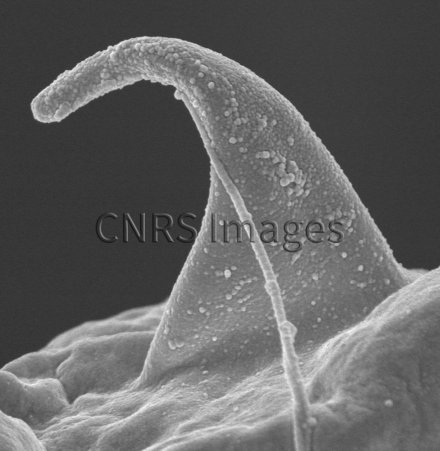Production year
2017

© Hélène CHANUT / CBD / CNRS Images
20170079_0003
Epidermal cell extension in a fruit fly embryo, observed using a scanning electron microscope. The aim of research scientists is to study the genetic mechanisms that control the way epithelial cells change shape. The formation of these extensions is regulated in space and time by a tripartite gene network comprising Shavenbaby transcription factor (Svb), E3 ubiquitin ligase (Ubr3) and Pri smORF peptides. Pri peptides belong to a new family of smORF peptides whose functioning is relatively poorly understood, but which constitute an unexplored source of molecules of importance to research in agronomy and medicine.
The use of media visible on the CNRS Images Platform can be granted on request. Any reproduction or representation is forbidden without prior authorization from CNRS Images (except for resources under Creative Commons license).
No modification of an image may be made without the prior consent of CNRS Images.
No use of an image for advertising purposes or distribution to a third party may be made without the prior agreement of CNRS Images.
For more information, please consult our general conditions
2017
Our work is guided by the way scientists question the world around them and we translate their research into images to help people to understand the world better and to awaken their curiosity and wonderment.